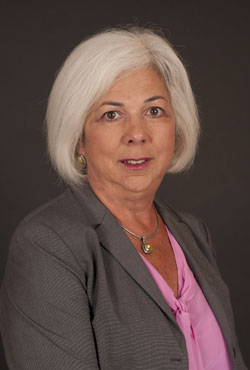Bridging the Theory-Practice Gap
There has always been a bit of a gap between nursing theory and practice. Nurses encounter many complexities related to how individuals view health and interact with their environment to achieve some level of health.
Nursing theories have offered us great insights into how individuals grow and become, how they place value on different aspects of health, and how their interactions with nurses can be beneficial. While nurses are not always prepared to formally declare a theoretical preference or embrace the teachings of a specific theorist, you can certainly see that each practicing nurse brings some theoretical ideas and perspectives to the care they provide.
In the digital era, the opportunities for seeing the application of theory in practice have become more challenging. The use of technology predominates as we replace verbal communication with texting and narrative documentation with checklists.
While technology can be helpful in reducing the burden of multiple tasks, it cannot replace the process for establishing relationships with patients. Further, nurses can begin an encounter with genuine interest in what’s most important to a patient but helping patients to achieve their goals often requires a more complete understanding of how they live their life.
I was pleased to reflect on this issue more in recent days as I returned from a stimulating meeting sponsored by ACENDIO in Oslo. The discussions ranged from the theoretical to the details of documentation.
I was truly appreciative of the colleagueship and the dialogue about our mutual goals for the development and utilization of standardized language across countries. Indeed, theories serve as an essential guide for nurses as they articulate their philosophy of nursing and shape the ways in which they interact with patients to achieve optimal health outcomes.
On the other hand, standardizing our language necessarily involves an organizing structure for naming phenomena, categories, and subcategories, which is not necessarily driven by theories.
Once again, I return to the question about how nurses come to know their patients. The process of assessment requires focus and skill to capture the essence of human functioning. Over time, I have seen a variety of instruments developed and used for this purpose.
Often, these instruments are in constant flux in education, practice, and research without providing opportunities for repetitive skill development that could potentially reduce cognitive and documentation burdens experienced by nurses. This variability serves as an important barrier as nurses are compelled to rely on labels in pick lists available in a particular EHR without considering the related patient history data available. (Rossi et al, 2022)
While Dr Gordon is most well known for her influence in advancing the diagnostic process, we must acknowledge that her greatest gift may have been the Functional Health Patterns Framework to guide the collection of a patient’s health history. It has been widely used and provides a framework that can be readily understood by patients, families, and members of other disciplines. (de Cassia Gengo e Silva Butcher and Jones, 2021)
It is not constrained by theory and serves its purpose by reminding us about nursing’s scope of practice and the phenomena of nursing concern. Let us continue to think more about how this essential step of assessment is carried out prior to making a diagnosis. It may well be the way in which we can bridge the theory-to-practice gap.
Laura Rossi, PhD, RN, ACNS-BC, FAHA, FNI
President, NANDA-I
president@nanda.org

de Cassia Gengo e Silva Butcher, R and Jones D. An integrative review of comprehensive nursing assessment tools developed based on Gordon’s Eleven Functional Health Patterns Int J Nurs Knowl. 2021;32:294–307 DOI: 10.1111/2047-3095.12321
Rossi L, Butler S, Coakley A, Flanagan J. Nursing knowledge captured in electronic health records. Int J Nurs Knowl. 2023 Jan;34(1):72-84. doi: 10.1111/2047-3095.12365. Epub 2022 May 15. PMID: 35570416.
